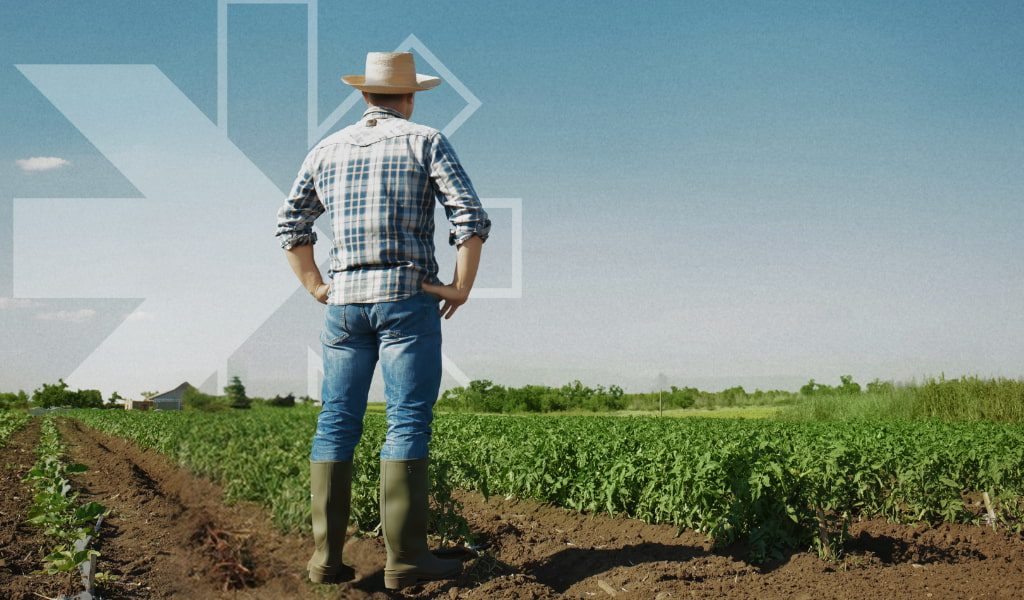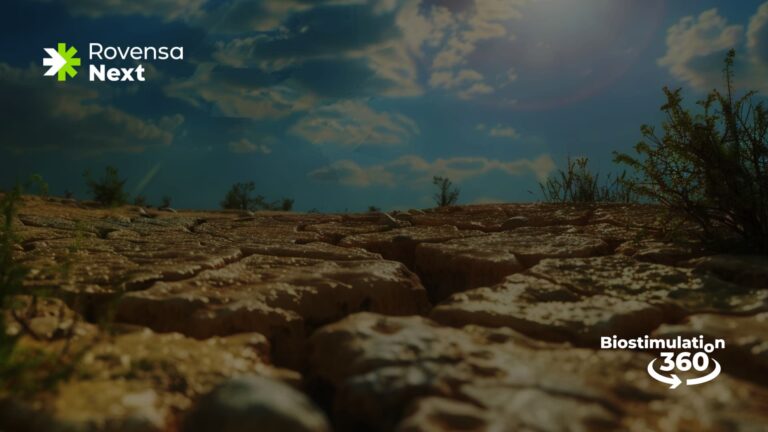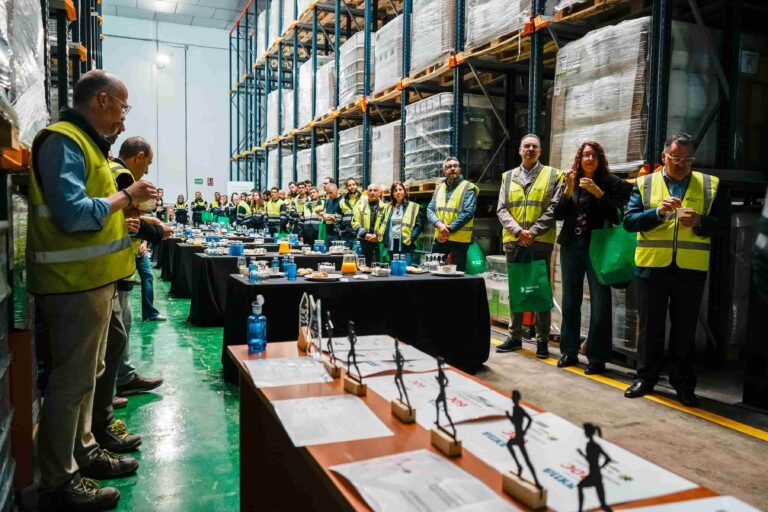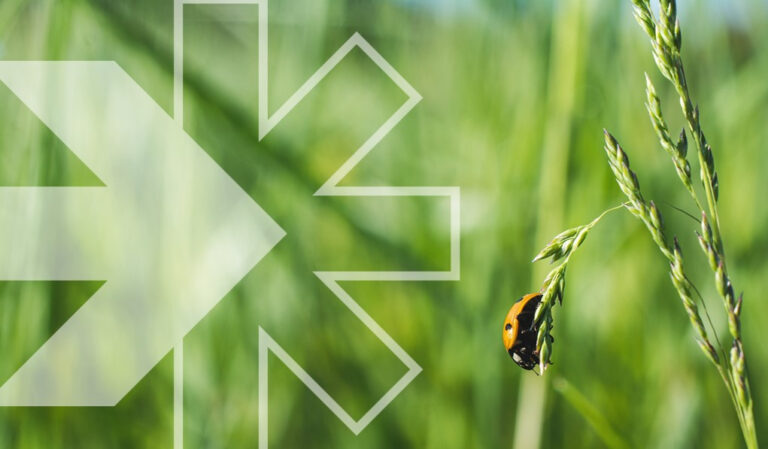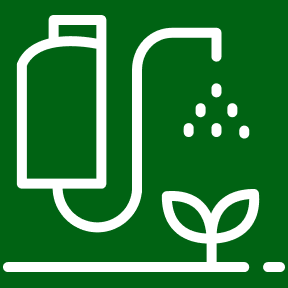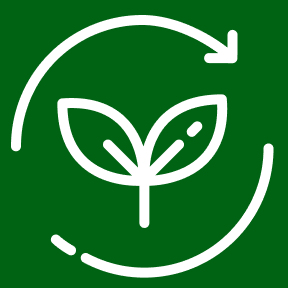What is hypoxia stress in agriculture and how does it affect crops?
Hypoxia stress in agriculture refers to a condition where plants experience oxygen deficiency in their growing environment due to partial or complete submergence under rainfall water. This lack of oxygen negatively impacts plant growth and development, posing significant challenges to crop productivity.
The effects of hypoxia stress on crops can be severe and multifaceted:
- Reduction in cellular permeability: Hypoxia can lead to increased osmotic stress, affecting the ability of plant cells to absorb water and essential nutrients.
- Root mortality: Oxygen deprivation can result in root asphyxiation and subsequent rotting, impairing the plant’s ability to uptake water and nutrients from the soil.
- Increase in oxidative stress: Hypoxia can trigger the accumulation of reactive oxygen species (ROS) within plant tissues, causing oxidative damage to cellular structures and impairing physiological processes.
- Reduction in transpiration and leaf formation: Hypoxia stress often results in reduced transpiration rates and inhibited leaf development, compromising the plant’s ability to photosynthesis and produce energy.
- Lack of Photosynthesis: will stop the production of carbohydrate and the depletion of the reserves, leading to reduced plant growth.
Overall, hypoxia stress episodes poses a significant threat to crop health and productivity, highlighting the importance of implementing effective management strategies to mitigate its adverse effects and ensure sustainable agricultural production.
How can hypoxia stress negatively affect plant growth and development?
Hypoxia stress restricts oxygen levels, water and other nutrient absorption due to increased osmotic stress, leading to reduced cellular permeability and root mortality. Additionally, it triggers oxidative stress, compromises transpiration and nutrient transport, also inhibits leaf formation, impairing photosynthesis and overall plant growth and development.
Some of the damages plants can suffer are:
- Reduction of cellular permeability (increasing osmotic stress)
- Stunted growth
- Root mortality (asphyxia – rottenness)
- Increase of oxidative stress
- Reduction in transpiration, leaf formation, and chlorophyll content
One of the most common conditions plants suffer that provokes hypoxia is waterlogging. When excessive rainfall takes place and there is not a good drainage system to pump the water out, or the precipitation volume exceed soil absorption, fields end up flooded. Hence, plants begin to suffer from stress, not just because of the lack of oxygen (O2), but the lack of direct sunlight as well, as water tends to contain multiple particles from runoff.
Plant response to hypoxia stress
As previously mentioned, the lack of oxygen can result in hypoxia or anoxia, depending on the remaining oxygen levels. When extreme rainfall occurs, it is common to find hypoxia in flooded conditions and anoxia during submersion of the plants. Most crops cannot survive prolonged submergence or soil waterlogging. Crops are particularly intolerant to the lack of oxygen arising from submergence (Figure 1).
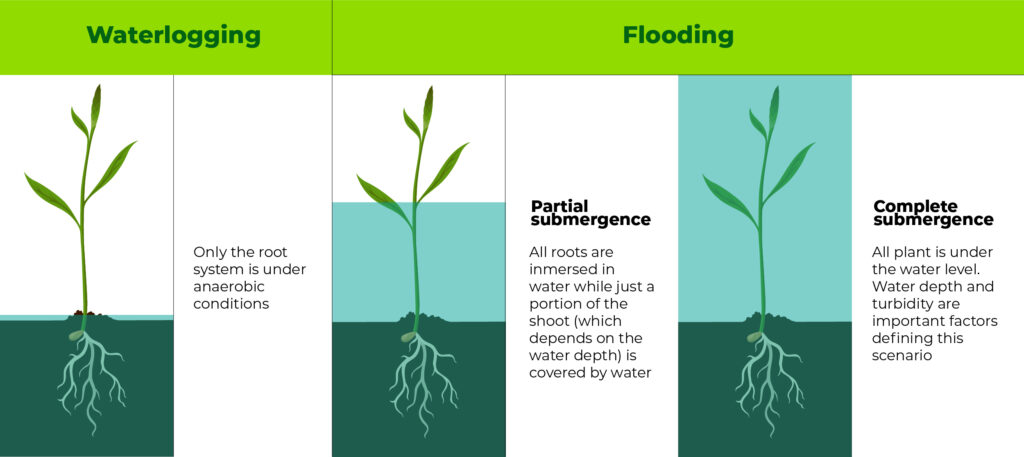
Some of the known plant response to flooding include:
- Low Oxygen Escape Syndrome (LOES): Plants use all metabolic resources to continue growing the aerial leaves that are not covered by water, exhausting the carbohydrate resources, trying to be in contact with air and direct sunlight. During the recovery stage, plants grow at a much slower rate than non-stressed plants (Figure 2).
- Low Oxygen Quiescence Syndrome (LOQS): Plants save as much energy as possible and halt growth until stress disappears and normal oxygen levels return. This stoppage in growth impacts the potential yield and quality. Once stress conditions subside, plants resume growth at a regular rate (Figure 2).
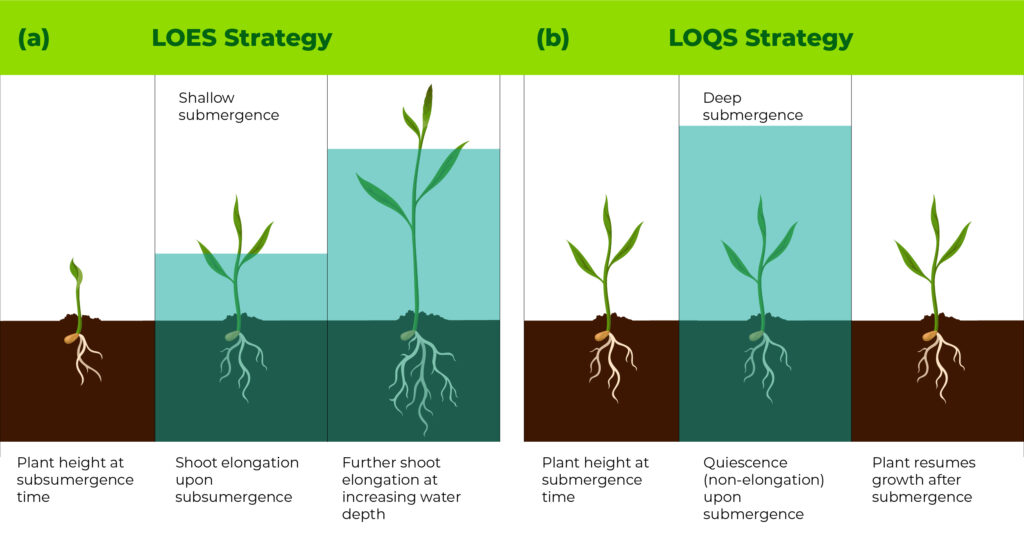
The morphological changes are hormone-mediated, involving ethylene, auxins, and gibberellins, creating a disbalance and abnormal leaf development. These changes are known as:
- Epinasty: Increased growth of the upper surface of a plant part, such as a leaf, resulting in a downward bending of the part (Figure 3).
- Hyponasty: Increased growth of the lower surface of a plant part, resulting in an upward bending of the part (Figure 3).
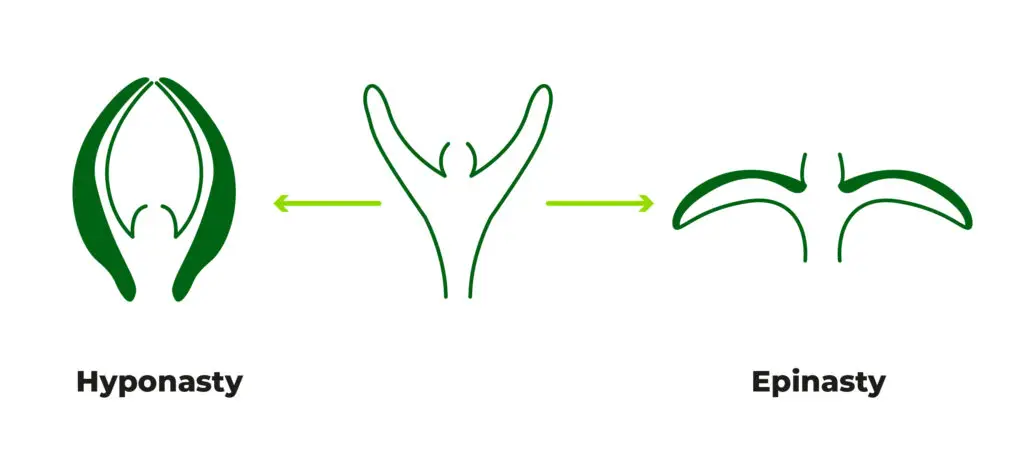
Biostimulation to confront hypoxia stress
Rovensa Next has continuosly developed trials strategies with the biostimulants Phylgreen, and Delfan Plus, along with components such as polysaccharides and mannitol. These trials demonstrated the efficacy of these biostimulants in maintaining growth and vigour in Arabidopsis thaliana and Solanum lycopersicum plants under hypoxia stress during flooding. The aim is to identify the presence of resistance responses that improve the mechanisms through which biostimulants act to enhance plant health and reduce stress.
Phylgreen
Phylgreen is a biostimulant derived from Ascophyllum nodosum seaweed, designed to reduce stress severity and maximize yield. The Primactive effect leverages mannitol, alginates, polysaccharides, and polyphenol antioxidants. The Gentle Extraction® process preserves natural active ingredients by avoiding chemicals and high temperatures. Phylgreen is recommended for preventing and overcoming climatic stress and biostimulating plant development during critical stages like germination, transplanting, flowering, fruiting, and ripening. It is suitable for use at most crop growth stages as a foliar spray and for fertigation.
Delfan Plus
Delfan Plus is a highly concentrated biostimulant of L-α free amino acids that alleviate abiotic stress in crops during or after stress events through its Curactive effect®. The carefully selected aminogram offers over 17 types of L-α free amino acids essential for plant growth and stress relief. Delfan Plus has been successfully used as a for the Curactive effect® to reduce the abiotic stresses like heat, frost, drought, and herbicide damage. It reactivates carbohydrate and nitrogen metabolism, helping plants synthesize anti-stress compounds and essential molecules. Delfan Plus also enhances nutrient uptake during co-application and is recommended as a foliar spray and for drip irrigation.
As detailed above the article, hypoxia is a complex abiotic stress that need a multi-approach.
To reduce the negative impact of hypoxia, Rovensa Next both a Primactive application of Phylgreen to prepare it for the incoming stress as well as a Delfan Plus application to restart most of the plant metabolic functions.
Rovensa Next local teams can help with your results!
Should you have any questions in how to manage hypoxia in your crops, how to better manage abiotic stress in general or other agronomic needs, our local team is ready to assist you. Please get in contact with your local representative. Contact us.

